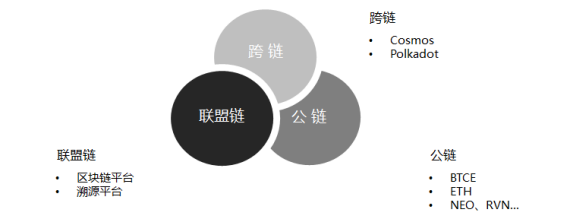-
Cryptocurrencies
-
Exchanges
-
Media
All languages
GMPC (GMPC Combination Chain, hybrid chain) is a multi-chain composite hybrid chain architecture to realize asset interconnection between public chains, alliance chains and even cross-chains, and is committed to becoming the world's largest blockchain value flow engine engine.
GMPC adopts a multi-chain composite hybrid chain architecture, independently develops the GMPC BFT innovative consensus mechanism, integrates the pan-POS Staking ecology, and realizes the "multi-chain-relay chain-cross-chain" fusion chain protocol interaction, hybrid storage, and heterogeneous Realizing asset interoperability and data distribution and transmission on the chain through the framework protocol, it will surely promote the flow of application value such as the global chain game ecology, grid chain governance, and aggregation of decentralized asset transactions.
Basic concepts
Based on the core pain points of the current blockchain, the team first proposed the architecture concept of the hybrid chain in February 2019. In general, the hybrid chain is a multi-chain hybrid complex blockchain grid architecture, which is a revolutionary and subversive blockchain architecture. Its core elements:
(1) The hybrid chain is A hybrid grid architecture compatible with public chains, cross-chains, and alliance chains.
GMPC supports a mixture of the following protochains:
· Public chains: BTC, ETH, NEO, ONT...
· Cross-chain: Cosmos, Polkadot, Ladder
· Alliance chain: various popular blockchain platforms

Different from cross-chain, GMPC's hybrid chain not only supports single-chain and public-chain connectivity, but also supports interoperability between cross-chains and even consortium chains. For example, through GMPC, the zone of Cosmos and the parallel chain of Polkadot ecology can communicate with each other in traffic transmission, data interaction and token trading. If congestion occurs in ETH games, GMPC can be used to switch to other cross-chains. In addition, GMPC also supports access to the alliance chain, the most typical scenario is the token mapping of the traceability alliance chain.
(2) The hybrid chain is an application-level hyperchain protocol, and it also has the ability of grid chain node governance
.
GMPC will be applicable to token transactions and traffic interactions between public chains and public chains, between cross-chains and cross-chains, and between public chains and consortium chains. In the early stage, we will use the most typical applications such as aggregated decentralized exchanges, financial payments, traceability alliance chains, etc. The aggregated decentralized transactions under the hybrid chain technology can completely solve the problems of low efficiency of users' cross-transaction transactions, difficult comparison, and high cost of moving bricks. The original chains with the same consensus algorithm and application scenarios belong to the same unit organization. Since the same unit organization has the same trust model, consensus mechanism, and application interaction ecology, this provides a rich imagination space for cooperation between protochains, community governance, and node reward ecology.
(3) The mixed chain respects Wanchain's own ecological choice.
This is different from the design concept of the public chain and cross-chain. From the technical design point of view, the public chain and cross-chain are exclusive. It hopes that the application scenario and the original chain can adapt to its own architecture, which requires changes The technical architecture of the protogenesis chain. For example, in Cosmos cross-chain, a chain becomes a Cosmos Zone, which means that it needs to strictly follow the Cosmos Tendermint BFT consensus protocol and the IBC cross-chain protocol. From the perspective of the outside world, the Zone ecology also loses its degree of freedom. GMPC adopts a completely different strategy. "Mixed" refers to the collection of different substances without chemical reactions. The GMPC hybrid chain is to create a scalable container. On the premise of fully maintaining the technical structure, storage structure and governance organization of the original chain, and without "chemical interaction", it provides circulation, interaction and interconnection between the original chains. Serve.
App Ecology
There are many application scenarios between mixed chains. Imagine a VISA-like payment application with hundreds of millions of users, tens of thousands of transaction requests per second, hundreds of millions of transactions per day, and a second-level response experience for user transactions. Under the existing blockchain technology, data storage adopts chained local storage, which makes it impossible to expand in parallel, and the consensus mechanism adopts a synchronous state machine model, which makes it impossible to process transactions efficiently. At the same time, it is limited by the performance limit of a single node in the network. The architecture cannot meet the performance, capacity, user experience, and other requirements of the application.
Some applications need to perform parallel segmentation of data according to the needs of business functions to meet the business requirements and security requirements of data isolation. Since each full node in the single chain in the current blockchain technology system has a full All data in the network, so it cannot meet the requirements of such applications.
Imagine a financial application, where users can exchange an asset for financial products of different institutions, and different assets need to be transferred and exchanged on multiple chains. There are also some ORACLE applications that also require cross-chain interaction between multiple chains, such as exchange rate quotes, weather, stock prices, specific indicators, and so on.
The advantage of GMPC is that it is applicable to many application scenarios, including token transactions and traffic interactions between public chains, between cross-chains, between public chains and alliance chains, and the most typical example is decentralization Exchanges, financial payments, traceability alliance chains, node reward models, etc.











